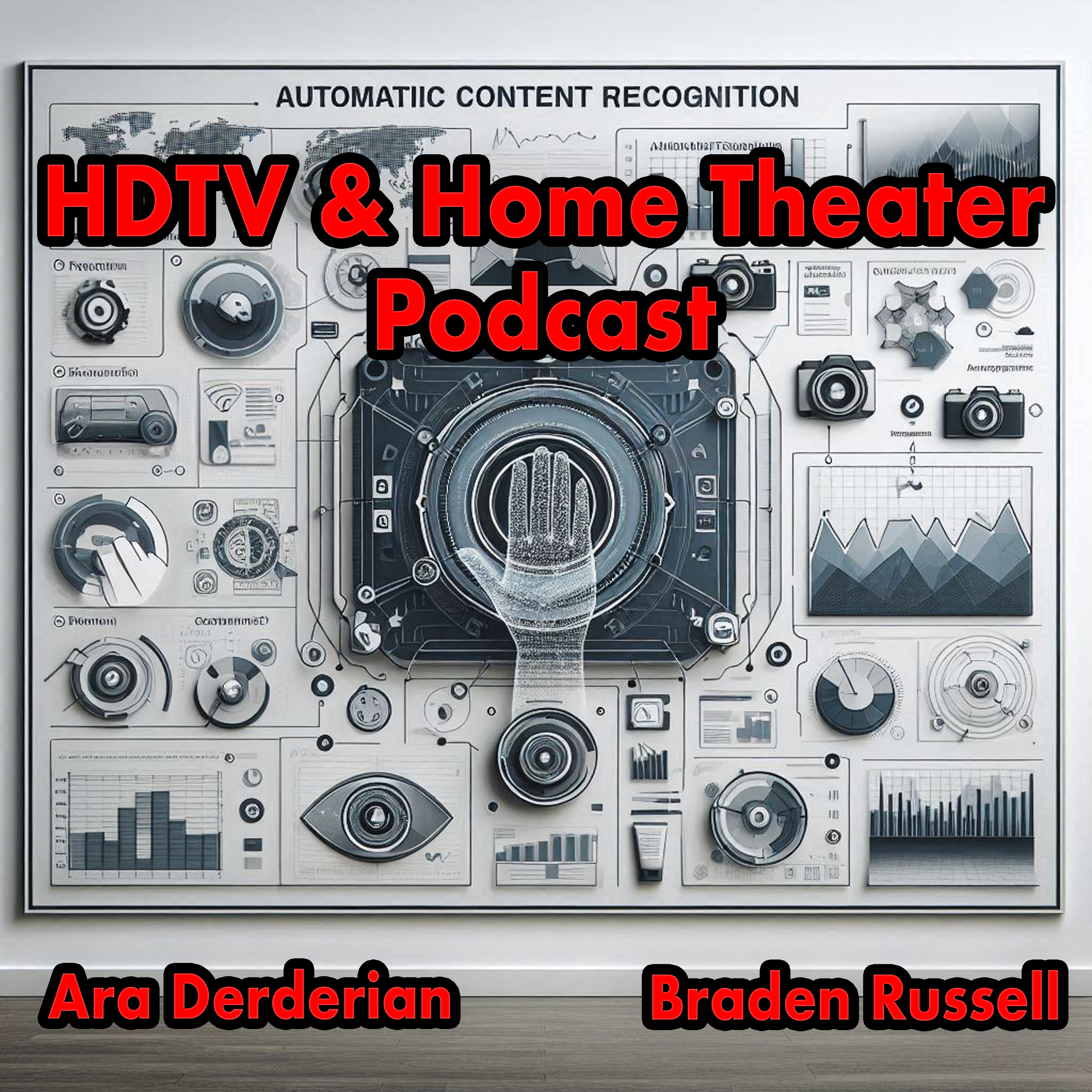 |
HDTV and Home Theater PodcastAuthor: HT Guys
The HT Guys, Ara Derderian and Braden Russell, are Engineers who formerly worked for the Advanced Digital Systems Group (ADSG) of Sony Pictures Entertainment. ADSG was the R&D unit of the sound department producing products for movie theaters and movie studios. Two of the products they worked on include the DCP-1000 and DADR-5000. The DCP is a digital cinema processor used in movie theaters around the world. The DADR-5000 is a disk-based audio dubber used on Hollywood sound stages. ADSG was awarded a Technical Academy Award by the Academy of Motion Picture Arts and Sciences in 2000 for the development of the DADR-5000. Ara holds three patents for his development work in Digital Cinema and Digital Audio Recording. Every week they put together a podcast about High Definition TV and Home Theater. Each episode brings news from the A/V world, helpful product reviews and insights and help in demystifying and simplifying HDTV and home theater. Our email address is hdtvpodcast@mac.com Language: en-us Genres: News, Tech News, Technology Contact email: Get it Feed URL: Get it iTunes ID: Get it |
Listen Now...
Podcast #1228: Black Friday 2025
Friday, 21 November, 2025
On this week's show we find you the best Black Friday deals for your home theater, well at least at the time of recording. We also read your emails and take a look at the week's news. News: YouTube TV and Disney reach agreement to restore channels Disney+ and Hulu near 200 million combined subscribers New Study Finds 38% Of Respondents View TV With Speaker Sound Off Content Discovery Still a Challenge for Streamers Other: ONKYO - Adding Internet Radio Stations Bright Side Home Theater MOVEMBER MEGA RAFFLE 2025 Movember Raffle — Bright Side Home Theater Black Friday 2025 Each year we go through the Black Friday ads from various stores and list items. It's a long list and can be tedious to listen to. So this year we decided to search out what we thought were the best deals on various items for your Home Theater and Smart Home. This year many retailers are not releasing their sales until the last minute and since we are recording one week before Black Friday our list may be missing a few items that pop up later. But here is our early list of things we think you will be interested in: The standout deal for the largest screen size at the lowest price is the 98-inch TCL Q Series 4K QLED Google TV at Walmart for $998 (down from $1,798, saving $800). This is a 2025 model with premium features like 144Hz refresh rate, Dolby Vision HDR, Dolby Atmos audio, and Google TV smart platform—making it ideal for movies, gaming, and streaming without breaking the bank under $1,000. Hisense has a slightly more expensive model that hits that magic 100" mark. The 100-inch Hisense QLEDs (priced between $1,000–$1,200) delivers the biggest diagonal size for the cheapest absolute dollar amount right now. Deals can fluctuate or sell out quickly, so check often and lock in your price. The Best soundbar deal with dolby ATMOS we have seen so far is the Samsung HW-Q990D 11.1.4-Channel Soundbar System at $1,000 (save $1,000 off $2,000 MSRP) at Best Buy. It's praised as the "best Dolby Atmos soundbar system" for its massive scale, precise 3D sound, and gaming features (4K/120Hz HDMI). At 50% off, it outperforms pricier competitors in value and power (656W total). If you want something more compact, the JBL Bar 1300X ($1200) edges it for portability. The Govee Holiday sale starts November 20th at Amazon. We don't know what the savings will be but Ara owns some Govee light strips and is very pleased with them. They support Matter and can be installed permanently outdoors. The best deal on a Samsung high end TV is the Samsung S95F OLED for 2025, known for being bright, vivid colors, deep blacks, and excellent motion handling, this TV is ideal for bright rooms or mixed use. It includes the NQ4 AI Gen2 processor for 4K upscaling, four HDMI 2.1 ports, and Tizen OS with free channels and cloud gaming. Current Black Friday deal: 65" for $2,298 at Amazon (save $700 from $2,998)—matches the all-time low. There are 77 and 83 inch models for $3500 and $5000 respectively. The Best Deal on high end wireless speakers the Kef LS50 Wireless II ($2000) is more than a high-performance loudspeaker; it's the perfect all-in-one speaker system, streaming from any source thanks to wireless compatibility with AirPlay 2, Google Cast and more, plus wired connections for your TV, games console and turntable. Great sound, no strings attached. If you are looking for a gift for the Home Theater enthusiast in your life, and that may mean you buy it for yourself. Check out The Home Theater Store. They are running a black friday sale on seating, decor, and accessories. Some examples include popcorn machines starting at $40 and going all the way up to $2000. With savings up to $600. They also have sound panels normally priced at $750 on sale for $500. The Best deal on the Ring Battery Doorbell is $50 at Amazon. And as long as we are here. THis deal is crazy! Two Blink Mini 2 Home Security & Pet Cameras with HD video, color night view, motion detection, two-way audio, and built-in spotlight for $28! The best overall deal on an OLED TV is the LG 77" C5 Series OLED evo AI 4K UHD Smart webOS TV (2025 model) at $1,999.99 at Bestbuy (down from $3,699.99—a $1,700 savings, or 46% off). The LG OLED evo C5 is powered by the next-gen Alpha 9 Gen8 AI Processor —exclusively made for LG OLED—for ultra-realistic picture and sound along with boosted brightness for luminosity and high contrast, even in well-lit rooms. Dolby Vision for extraordinary color, contrast and brightness, plus Dolby Atmos for immersive sound you can feel all around you. FILMMAKER MODE allows you to see films just as the director intended. Packed with gaming features, the LG OLED evo C-Series comes with everything you need to win like a 0.1ms response time, native 120Hz refresh rate, with VRR for PC gaming and four HDMI 2.1 inputs. AWOL Vision LTV-3000 Pro 4K Laser Projector, (I found a better deal at Amazon after we recorded. $2300!!) has a compact ultra-short-throw (UST) model that transforms any wall or table into a massive, vibrant cinema screen without the bulk of a traditional TV setup. Unlike standard projectors that require dark rooms and precise mounting, this one projects up to 150 inches from just inches away, with built-in speakers delivering Dolby Audio and a sleek, furniture-like design that blends into your space. Priced at $2,999 (down from $3,999—a $1,000 savings with discount code obtained at the AWOL site) A killer deal on an AVR is the Denon AVR-X2700H for $680. At this price it would have made our list of best AV receivers for enthusiasts. It has 95W per channel, Dolby Atmos and DTS:X audio formats for up to 5.1.2 setups, Audyssey room calibration. It features 8K/60Hz and 4K/120Hz video passthrough with Dolby Vision and HDR10+ HDR, and HDMI 2.1 connectivity, Bluetooth, Wi-Fi, and voice control via Alexa, Google Assistant, and Siri. The best deal on a no-frills subwoofer that packs a punch is the Klipsch Reference R-121SW ($350 at Walmart regular price $650). 400W peak power, 29-120Hz response, front-firing port for room-filling punch; ideal for movies/gaming. Compact at 16"H x 14"W. Known for it's "chest-thumping" bass without the boominess. Perfect starter upgrade for under $350. The craziest 50-Inch TV Deal we have seen is the Insignia 50" Class F50 Series LED 4K UHD Smart Fire TV at $169.99 at Best Buy. Is this a great TV? No but it's shockingly good value with Alexa voice control, built-in Fire TV streaming, and DTS Virtual:X audio for immersive sound without extra speakers. Picture quality is decent for bright rooms. Home Depot has great deals on Nest Thermostats. Some deals are active now and others on Black Friday. We are reading that Home Depot will have the Google Nest Learning Thermostat (4th Gen) available for $199. It's regularly priced at $279. Check out their site for more BLACK FRIDAY DEALS FROM GOOGLE SMART HOME.





